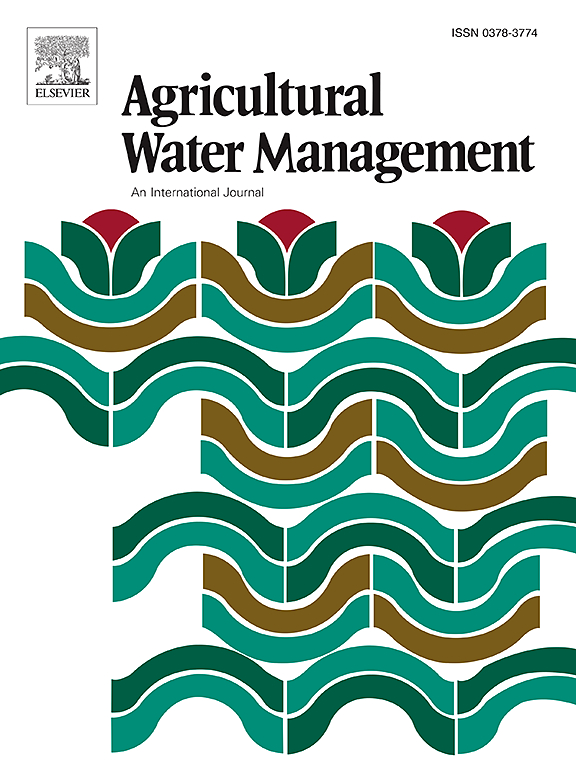Temporal dynamics of soil salinization due to vertical and lateral saltwater intrusion at an onshore aquaculture farm
IF 5.9
1区 农林科学
Q1 AGRONOMY
引用次数: 0
Abstract
Saltwater intrusion (SWI) on low-lying coastal farms causes soil salinization, which may gradually render the land unsuitable for cultivation. Many studies on SWI focus on groundwater flow and salt transport, where the temporal dynamic of consequent soil salinization is understudied. To understand the effects of SWI on soil salinity, we gathered multi-scale field datasets on water level and salinity during an aquaculture impoundment, which resulted in both vertical and lateral groundwater salinization. By comparing continuous field data before and after impoundment, we captured lateral SWI and vertical SWI processes and the resulting soil salinity variation. In the vertical SWI process, soils from the surface to 0.2 m-deep were salinized immediately after saltwater irrigation due to the downward hydraulic gradient. A relatively slow salinization was formed at a depth below 0.3 m. In the lateral SWI process, the hydraulic conductivity of the sediments was doubled, which resulted in a more significant variability of salinity. Our findings illustrate that the temporal agricultural water management associated with transforming cropland into aquaculture ponds can alter soil physical characteristics and hydrological conditions at different locations. The resulting soil salinization showed multi-scale variability, which was much more complex than groundwater salinization. Therefore, studying the complete transformation process of coastal land use can contribute to an improved understanding of soil and groundwater salinization due to agricultural activities, which is essential to protecting and managing coastal soils and the associated agroecosystem services.
陆上水产养殖场垂直和横向盐水入侵导致土壤盐碱化的时间动态变化
盐水入侵(SWI)会导致沿海低洼农场的土壤盐碱化,使土地逐渐不适合耕种。许多关于盐水入侵的研究都集中在地下水流和盐分迁移方面,而对随之而来的土壤盐碱化的时间动态研究不足。为了了解 SWI 对土壤盐度的影响,我们收集了水产养殖蓄水过程中水位和盐度的多尺度野外数据集,该蓄水过程导致了垂直和横向的地下水盐化。通过比较蓄水前后的连续实地数据,我们捕捉到了横向 SWI 和纵向 SWI 过程以及由此产生的土壤盐度变化。在垂直 SWI 过程中,由于水力梯度向下,从地表到 0.2 米深的土壤在盐水灌溉后立即盐化。0.3 米以下的土壤盐渍化相对缓慢。在横向 SWI 过程中,沉积物的水力传导性增加了一倍,从而导致盐度变化更加显著。我们的研究结果表明,将耕地改造成水产养殖池塘所带来的农业用水管理时间性会改变不同地点的土壤物理特征和水文条件。由此导致的土壤盐碱化呈现多尺度变化,比地下水盐碱化复杂得多。因此,研究沿海土地利用的完整转变过程有助于更好地了解农业活动导致的土壤和地下水盐碱化,这对保护和管理沿海土壤及相关的农业生态系统服务至关重要。
本文章由计算机程序翻译,如有差异,请以英文原文为准。
求助全文
约1分钟内获得全文
求助全文
来源期刊

Agricultural Water Management
农林科学-农艺学
CiteScore
12.10
自引率
14.90%
发文量
648
审稿时长
4.9 months
期刊介绍:
Agricultural Water Management publishes papers of international significance relating to the science, economics, and policy of agricultural water management. In all cases, manuscripts must address implications and provide insight regarding agricultural water management.
 求助内容:
求助内容: 应助结果提醒方式:
应助结果提醒方式:


